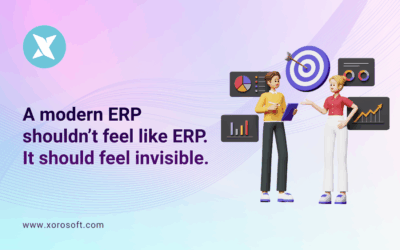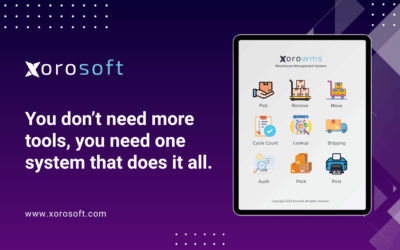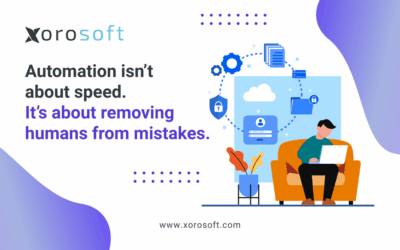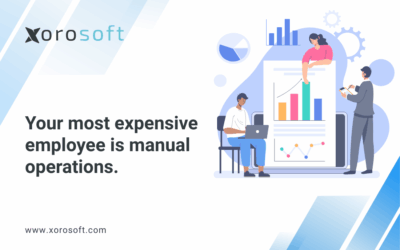
Stop Revenue Leaks: Why Ecommerce Returns Automation is Essential 📉
Ecommerce returns automation is the crucial solution that addresses a persistent problem: managing returns. You founded your brand to build a legacy, yet returns management often becomes the single greatest operational drag. Consequently, this drag consumes margins and aggressively steals focus from your core mission of brand growth.
Indeed, every return is a multi-layered tax. For instance, there is the cost of reverse logistics, labor for restocking, and, most critically, the erosion of customer lifetime value (CLV).
If you are a founder or Head of Operations, your core desire is simple: maximize profitability by eliminating operational inefficiencies. You want your team focused on growth, not correcting shipment mistakes.
Therefore, the good news is that the most powerful levers to control this chaos are automated. This guide is for leaders ready to stop viewing returns as the “cost of doing business.” We will, however, show you exactly how to transform your operations using powerful ecommerce returns automation.
Key Benefits of Strategic Returns Automation
By implementing strategic returns automation, you fundamentally shift your operation. Specifically, you move from reactive cost containment to proactive, error-proof fulfillment.
-
Solving the Root Cause: Focus significantly less on processing the return. Instead, ensure the original shipment was so accurate it never needed to be returned.
-
Unifying Data for Accuracy: Connect your order, inventory, and fulfillment systems instantly. Therefore, you stop overselling and guarantee the right item ships every single time.
-
Accelerating Cash Flow: Turn around the money tied up in refunds much faster. Consequently, this critically improves your Cash Conversion Cycle.
-
Elevating Customer Trust: Deliver a predictable, perfect experience. In addition, this reduces buyer friction and consistently boosts loyalty.
Uncovering the Frictions Driving High Return Rates
Most returns are not simply due to buyer’s remorse; rather, they are the direct result of internal operational friction. However, these internal inefficiencies are often invisible until they surface clearly in your returns data. Addressing these is the fundamental first step in successful ecommerce returns automation.
Common Operational Pitfalls That Kill Profit
-
Manual Data Entry Causes Shipping Errors: Relying on human labor to transfer order data between your Order Management System (OMS) and Warehouse Management System (WMS) is a high-risk activity. Ultimately, this is a direct pathway to shipping the wrong size, color, or item.
-
Lack of Real-Time Inventory Visibility: When your storefront (e.g., Shopify) fails to instantaneously communicate with your physical inventory ledger (ERP/WMS), you inevitably oversell. Consequently, this leads to preventable cancellations and refunds that severely damage brand trust.
-
Inconsistent Quality Control Checks: The ‘final check’ during packing is frequently rushed or lacks standardization. Therefore, this leads to returns for minor defects or damaged goods that should have been caught pre-shipment.
-
Disjointed Systems (The ‘Integration Tax’): If your core systems (OMS, WMS, ERP) cannot communicate fluently, you lose the ability to track a product from initial sale through to final return analysis. As a result, this lack of data makes systemic error prevention impossible.
-
Slow, Error-Prone Returns Processing: A sluggish returns process creates significant friction for the customer. Furthermore, it turns a one-time issue into a high chance of losing a lifetime customer. Finally, delays in refunding cash negatively impact your essential liquidity.
Prevention: Guaranteed Fulfillment Accuracy via Automation
The most effective strategy against high returns is proactive prevention. In fact, ecommerce returns automation achieves this by establishing and enforcing a single source of truth across your entire operation, standardizing every fulfillment step.
Eliminating Fulfillment Errors with Smart Automation
The most frequent returns—wrong size, wrong color, wrong item—are typically a failure of the fulfillment chain. However, automation solves this problem through guaranteed, system-enforced accuracy:
1. ERP-Driven Inventory Control: Your Enterprise Resource Planning (ERP) system instantly becomes the definitive, single source of truth for stock levels. Therefore, every sale immediately and automatically decrements stock, preventing overselling across all sales channels. Learn more about our inventory management features.
2. Pick-Pack Validation: Modern WMS and ERP systems enforce near-perfect pick accuracy using mobile scanners and barcodes. Specifically, the packer must scan the correct bin and the correct item UPC before the system grants permission to process the order. Consequently, this drives Pick Accuracy to virtually 100%.
Success Snapshot: The Apparel Brand Shift
A mid-sized DTC apparel brand was struggling with a 9.5% Returns Rate, with a significant 40% of returns cited as “wrong size/item shipped.” However, they implemented an integrated WMS/ERP solution that enforced scan-based validation during picking and packing.
-
Before: Manual checklists, 91% Pick Accuracy.
-
After: Scan-based validation, 99.8% Pick Accuracy.
-
KPI Impact: The Returns Rate dropped to 7.1% within six months. Ultimately, this represented a $120,000 annual saving in labor and shipping costs. Read more success stories here.
Measuring Automation Success: The Critical Operational Metrics
For non-technical leaders, it is absolutely vital to track operational metrics that link directly to profitability and the customer experience. Furthermore, strategic ecommerce returns automation moves all these numbers in the right direction.
Key Metrics to Validate Returns Automation Success
| Metric | Definition | Why Automation Helps |
| Returns Rate (%) | Total value of returned goods / Total value of shipped goods. | Focuses on prevention by reducing fulfillment and quality errors. |
| Pick Accuracy (%) | Correct items shipped / Total items shipped. | Directly measures fulfillment quality, eliminating the primary return cause. |
| Cash Conversion Cycle (CCC) | Days it takes to convert cash into inventory, and back into cash via sales. | Speeds up the refund process, returning cash to your business faster. |
| Defective Return Rate (%) | Returns cited as damaged/defective. | Allows for automated, standardized quality checks at the packing station. |
In summary, a significant financial win from ecommerce returns automation is the notable improvement in the Cash Conversion Cycle (CCC). By automating the receipt, inspection, and refund trigger of returns, you dramatically reduce the time your operating capital is tied up in a pending refund. Consequently, this frees up critical cash for operations and brand expansion.
The 6-Step Playbook for Automated Returns Reduction
Implementing ecommerce returns automation does not require a disruptive, “big bang” overhaul. Instead, it demands a strategic, phased approach that focuses on the highest-impact areas first. Therefore, this calm, concrete plan is designed for you and your operations team.
Phase 1: Prevention-Focused Automation Strategy
| Step | Goal | Action | Metric |
| 1. | Eliminate fulfillment errors. | Implement WMS-driven pick-pack validation (scanner enforcement). | Pick Accuracy (%) |
| 2. | Prevent overselling/stock-outs. | Integrate OMS and ERP for unified, real-time inventory visibility. | Returns Rate (from “wrong item/size”) |
| 3. | Standardize outgoing quality. | Automate pre-shipment quality checkpoints (e.g., photo-logging of high-value goods). | Defective Return Rate (%) |
Phase 2: Processing-Focused Automation Strategy
| Step | Goal | Action | Metric |
| 4. | Speed up the refund cycle. | Automate RMA generation and trigger a provisional refund upon delivery scan confirmation. | Cash Conversion Cycle (days) |
| 5. | Reduce “buyer’s remorse” returns. | Automate pre-shipment confirmation with photo/video of the packed item sent to the customer. | Returns Rate (from “doesn’t match description”) |
| 6. | Improve return data analysis. | Implement automated tagging of return reasons and link them directly to product/order data in the ERP. | Top 3 Return Reasons Frequency |
Practical Execution: The Returns Automation Implementation Timeline
For operations leaders, the concept of ecommerce returns automation can sometimes feel overwhelming. Therefore, here is what the initial phase of systems integration looks like in a concrete, actionable timeline.
| Day | Focus Area | Actionable Steps for Ops Team | Outcome |
| Day 1-5 | Discovery & Data Mapping | Map the flow of a single order (Sale → ERP → WMS → Shipping). Identify every single manual data transfer point. | A clear, detailed map of data friction points. |
| Day 6-10 | Inventory Integration | Connect the e-commerce storefront (e.g., Shopify) to the ERP’s inventory module via API. Establish the ERP as the single source of truth. | Zero overselling possible across all channels. |
| Day 11-15 | Pick-Pack Setup | Configure WMS for required scanning validation (Item UPC vs. Order Line). Print new barcoded pick tickets. | System rejects wrong picks; Pick Accuracy begins to climb immediately. |
| Day 16-20 | Returns Workflow | Design the automated Returns Portal: RMA generation and pre-paid label creation triggered by customer submission. | Faster, self-service returns experience for customers. |
| Day 21+ | Review & Refinement | Analyze the first 100 automated returns. Compare Pick Accuracy to the previous month’s baseline. Adjust validation rules based on data. | Data-driven refinement of automation logic. |
Answering Key Questions About Ecommerce Returns Automation
Is Automation Only About Robotics in the Warehouse?
Absolutely not. While physical robotics is one form of automation, the most immediate and accessible form for DTC/omnichannel brands is software automation. Specifically, this involves integrating your key systems (ERP, OMS, WMS) so that data flows without human intervention. Ultimately, this data automation is what eliminates errors and reduces returns at a fraction of the cost of physical robotics.
Will Implementing Automation Require a Massive IT Project?
Leading, integrated solutions today are designed to be low-code or even no-code. Furthermore, they offer pre-built connectors to major platforms like Shopify, Amazon, and all major carriers. Consequently, the right central ERP system acts as the required hub, significantly simplifying the overall integration burden. Therefore, the initial setup requires focused attention, but the long-term maintenance is significantly lower than managing custom, point-to-point integrations.
How Can I Quantify the ROI of Returns Automation?
The Return on Investment (ROI) is simple and highly quantifiable. Start by determining your current Returns Rate and the average, true cost of processing a single return (labor, shipping, restocking). Then, recognize that every percentage point decrease in your Returns Rate, and every day shaved off your Cash Conversion Cycle, represents a direct, measurable saving that hits your bottom line. In conclusion, ecommerce returns automation is an investment in error prevention, not just efficient handling.
Reclaim Your Focus and Profit 🚀
The operational complexity of modern e-commerce demands a robust, integrated backbone. In contrast, relying on disconnected spreadsheets and manual data entry is a commitment to perpetual errors and high returns.
Ecommerce returns automation is not an optional upgrade; rather, it is a non-negotiable foundation for profitable growth. By eliminating operational drag caused by errors, you can finally put 100% of your time, capital, and focus into brand growth—where it belongs.
Start your journey by looking for an ERP solution that specifically addresses the needs of modern, multi-channel brands. Furthermore, ensure it offers deep, pre-built integration with your storefront and fulfillment processes.
➡️ Ready to see the impact? Book a demo today and start your automation journey.
Explore highly-rated, user-friendly ERP solutions that drive operational excellence:









